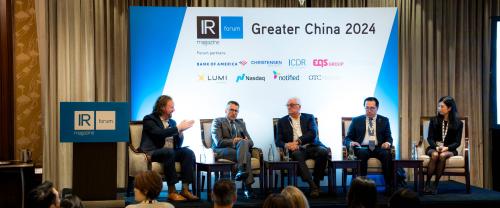New system to allow commission to analyze data at intervals of one millisecond
The SEC has contracted a high-frequency trading (HFT) platform vendor to help monitor the equities and options markets in real time in a move toward tighter policing of large high-frequency traders.
After a bidding and selection process lasting almost a year, the SEC has hired Tradeworx, which owns the Thesys Technologies HFT platform, to help collect real-time data from the 13 US stock exchanges, as well as the Options Price Reporting Authority.
The SEC opened its public selection process to bidding in November last year, seeking ‘an equity and equity option market data collection and analysis solution that combines access to data services, applications and related databases, and provides SEC staff with the same speed, ease and reliability of data collection and analysis that is available to sophisticated market participants.’
The contract is the result of the search by the SEC’s division of trading and markets and the division of risk, strategy and financial innovation for a system that would allow as many as 100 SEC users to back up and store three years’ worth of data, handle hundreds of queries daily and analyze data at intervals of 1/1,000th of a second.
‘Currently, the divisions primarily use daily trade and quote data for monitoring and analyzing intraday equity transactions,’ the SEC biding documents stated in November 2011.
‘This data is limited to top-of-book orders at each trading venue, and provides a view of the markets as seen from the consolidated tape. The divisions would like to expand their capabilities by extending data collection to real-time feeds in ways that allow a fuller analysis of trading.’
Thesys Technologies’ system is capable of ‘analyzing market data that floods in at peak rates of millions of messages per second, and respond to market changes within microseconds’, according to a review of the system by Intel, which manufactures the processor used by Thesys.
The SEC’s step toward a high-frequency monitoring platform is the latest in a series of moves the commission has made to intensify its watch over large-volume HFT. In July 2011 the SEC voted to adopt a large trader reporting regime, which established the push for more intense monitoring.
‘The fact is we live in a time when trades can be transacted in milliseconds or faster,’ SEC chairwoman Mary Schapiro said when the commission agreed to adopt the regime. ‘Large market participants can trade electronically in substantial volumes, at high speed and in multiple venues. It’s a time of rapid developments in trading technology and strategies.’
The SEC’s concern over HFT was highlighted on May 6, 2010 with the so-called flash crash that prompted the Dow Jones Industrial Average to briefly plummet about 9 percent. The crash sparked an SEC investigation into HFT firms, thought to be in part responsible for the crash.










